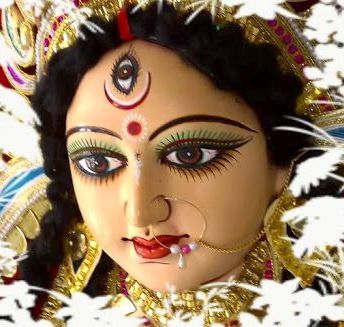The significance of Devi Bhagavatham/Sri Durga Sapthashathi
The Devi Bhagavatham/Sri Durga
Sapthashathi elaborately describes the glories of
Goddess Chandi. Sage Markandeya
eulogizes the splendor of Goddess Durga in seven hundred beautiful verses and
methods of worship of Goddess Durga as Nava Durga to attain an abundance of piousness. There are certain
methods should be followed for reciting the Durga Shapthashapthi, such as
reciting the hymns of Shapavimochana, these are the utterance of sacred syllables followed
with gestures/Yonimudra and initial obeisance to Goddess Durga. The first chapter eulogizes the glories of
Goddess Mahakali, the next three chapters eulogize the glories of Goddess
Mahalakshmi and the rest of the nine chapters eulogize the glories of Goddess
Mahasaraswathi. The Sathvik, Rajasik and Thamasik qualities help to attain wealth, in order to attain wisdom we require intense devotion and faith. Tantras describe the nine types of
Rasa/emotions such as love that wipe out ego and enhance devotion, joy is the outcome of humor,
laughter, happiness, and contentment, astonishment is the cause of playfulness and innocence,
courage is the result of braveness, confidence, and pride, peace is the state of serenity, kindness is the outcome of sadness, anger results in violence and hatred, fear causes apprehension, qualms, feeling
insecure and dislike is the result of self pity.
The essence of Durga
Sapthashathi is the knowledge of human emotions; it describes the nine emotions
of living beings. The demon Madhu/sweet
and Kaitabha/bitter, these two are the fundamental elements in human life such
as taste/sweet and bitter, sound/rejection and praise. Once the spiritual
seeker tackle the taste and sound, the next hurdle is the demon Mahishasura
which represents lust and rage, they try to knock down the aspirants of spiritual
seeker, this is the moment worship of the supreme Goddess who symbolizes energy comes to
protection, we have to channelize all our energies to fight against these lust
and rage though it is impossible to wipe out completely, at least we can get control
over it, and harness our energy for spiritual benefits. Once the seeker learned to tackle the taste,
sound, lust and rage, there comes another demon Dhoomralochana/darkness of
ignorance, it takes away the concentration of the spiritual seeker, it creates
wide distraction on his path of spirituality.
The demons Chanda/passion, cruelty, violence and Munda/inner conflicts,
is another kind of hurdle a true seeker should raise above this level too. The most powerful demon is Rakthabeeja/desires,
who has attained unique boon from Lord Brahma that every drop of his blood
spill on the battlefield causes to sprout countless forms of the demon, a true
seeker should have control over his desires which is countless in nature. The demon Shumbha/auspiciousness, pleasant,
morality and Nishumbha inauspiciousness, unpleasant, immorality, once the true
seeker trained to rise from the above impurities, he immerses in
bliss/compassion and love which is the real nature of living beings. The ultimate state is known as Surath/wisdom
and Samadhi/oneness which is the boon received from the supreme Goddess. The Durga Sapthashathi is all about the
knowledge of Bhramagrandhi which creates the thoughts, Vishnugrandhi that sustains
the thoughts and Rudragrandhi which is either fulfills or destroys them. The ultimate destination where a successful spiritual
seeker arrives in the path of seeking the truth, known as supreme bliss.


